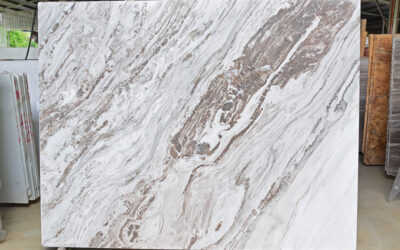Flooring FAQs
Flooring projects can be complex and we all have questions.
This set of question related to home flooring will provide some answers.
If we also feel that a more in-depth answer will be beneficial to you and have blog content that we can refer to then a link (or links) to the blog post(s) will be provided.
Flooring has a very significant impact on the look and feel of a room or area and we always look for ways to make your flooring project successful.

Hardwood Flooring FAQs

What is hardwood flooring?
Hardwood flooring is any flooring product made of real wood sawn from timber and manufactured for use as a floor.
Hardwood is available in a wide variety of different tree species and can be manufactured as solid hardwood (the planks consist of one solid piece of wood sawn from a single timber) or as engineered hardwood (a planks are made from multiple layers of wood adhered together). Hardwood flooring can come in planks, strips, parquet patterns and other shapes.
Generally, hardwood products come prefinished from the factory with stain and a wear layer to protect it, but in some cases the wood is installed without a factory finish and the finish is applied onsite.
How long do hardwood floors need to acclimate?
Most manufacturers recommend that any hardwood product be acclimated in the space that it will be installed for no less than 72 hours. It is also important to arrange the hardwood boxes for acclimation in a way that would give equal airflow to all of the boxes, ensuring each box of wood gets the same level of acclimation.
In general, stacking the boxes no more than 4 high and with at least 6” of space around all sides will suffice.
Can I steam clean hardwood floors?
No. Do not steam clean hardwood floors.
Cleaning your hardwood floors with a steam cleaner or with excess moisture will damage your floors and cause them to warp. In many cases using a steam cleaner on your floors will void their warranty. Always consult the warranty guide for your floor before using any cleaning products.
Some steam cleaner manufacturers may boast that their products are safe to use on hardwood floors (with the disclaimer that the floors must be properly sealed) but both the Wood Floor Covering Association and the National Wood Floor Covering Association do not recommend using steam cleaning products on hardwood.
How can I protect my hardwood floors from furniture scratches?
Hardwood floors are naturally resistant to damage and scratches from furniture, which is one of the factors that has contributed to their enduring popularity.
Nonetheless, there are steps you can (and should) take to help prevent furniture scratches. For example, you can purchase small felt pads, which are placed on the ends of chair and table legs, to help furniture glide more easily over your floors. You might also consider using an area rug, which offers cushioning and protection while still leaving most of your gorgeous hardwood flooring exposed.
What is the Janka Hardness Scale?
The Janka Hardness Scale is a test to assess the hardness of wood. The hardness of a wood species is the woods resistance to denting and wear.
The hardness test measures the force required to embed a steel ball into a sample of wood, and the resulting rating places that wood species on a hardness scale.
Ceramic Tile FAQs

What is ceramic tile?
Ceramic tiles are thin slabs of clay or other minerals tightly compressed and heated in an oven to create a hard and durable building material. Ceramic tiles can be glazed or unglazed, and can come in many different colors, shapes and sizes.
There are many different types of ceramic tiles, each manufactured in different ways with different material components for a wide array of applications. Ceramic tiles can be made to suit exterior and interior applications. There are ceramic tiles made for use on walls, floors, counter tops and more.
Porcelain tiles are among the most popular and durable types of ceramic tiles. Porcelain tiles are ceramic tiles that have heated at a greater temperature than typical ceramic tiles, making them more durable and less porous and therefore less water absorbent. A porcelain tile must have a water absorption rate of less than 0.5% to be classified as porcelain. All porcelain tiles are ceramic, but not all ceramic tiles are porcelain.
Glass tiles are not considered ceramic tiles but are another popular type of tile often used on walls, backsplashes and in other accent applications.
Natural stone tiles (tiles produced from cuts of naturally occurring stone such as granite or travertine) are also an alternative to ceramic tiles and can be used in a number of applications.
Which tiles are best for flooring?
The answer to this question all depends on you: your personal tastes and aesthetic style, your lifestyle, which room you’re re-flooring, and the environment where you live.
For example, ceramic tiles might be ideal for a bathroom or humid environment because they are highly resistant to moisture. No matter what you have in mind, talk with an expert who can help you find competitive prices on gorgeous products that fit your needs, your budget, and your sense of style.
What is the most durable floor tile?
Many people think of porcelain as a fragile material.
However, porcelain is one of the toughest types of tile and is resistant to damage from water, staining, pet claws, and furniture. If durability is a high priority for you, porcelain tile floors might be a good option.
Porcelain tiling is available in both glazed and unglazed varieties, depending on what sort of texture and surface you want to achieve.
Porcelain tile also comes in a wide range of colors and patterns, making it both durable and attractive.
Can ceramic tile be used outside?
Yes, but it must be the right type of ceramic tile and it must be installed properly.
One of the most important things to consider when selecting a ceramic tile for exterior application is the water absorption rate of that tile. It is generally recommended that you choose a tile with a water absorption rate of 3% or less, with less than 0.5% (porcelain) being ideal. If your tile absorbs too much water it may damage the tile, especially if the water freezes and expands which will cause the tile to crack.
You may also want to consider a through-body unglazed porcelain tile, meaning that the top color runs throughout the tile, which makes chips and damage less noticeable in the event your outdoor tile sees some extra abuse.
If you plan installing your tile outside with grout ensure that you are sealing your grout (or using sealed grout) and utilizing expansion joints when applicable to account for water and changes in temperature.
Luxury Laminated Flooring FAQs

Is laminate flooring waterproof?
In some cases yes, but not always.
Some laminate products on the market that advertise themselves as waterproof but typically laminate floors are not. With more common laminate water can cause major damage, especially if the water soaks into the wood pulp core causing it to expand and damage the rest of the plank and those planks around it.
There are many waterproof vinyl plank alternatives to laminate that will perform similar or better than laminate, and resist water damage, at a similar price point.
What is laminate flooring?
Laminate is an affordable, multilayered flooring product made from tightly compressed wood fiber and designed to look like wood, tile or stone.
Laminate flooring products typically have four layers: the backing layer, the core layer, the image layer, and the wear layer. The backing can vary depending on the product but is often made of cork, felt or another soft product to allow the laminate to sit comfortably on the floor.
The core layer is typically comprised of recycled wood fibers tightly compressed into a dense wood-like core, sometimes referred to as a high-density fiber (HDF) core. The image layer is where the desired look (e.g. wood, stone) is printed onto the product and texture is added through a process called ‘embossing’ to make it feel similar to the material it is made to look like.
The wear layer is a clear protective layer manufactured on top of the image layer. The wear layer is often made from aluminum oxide and designed to prevent the floor from scratching or showing excessive wear over time. Higher quality laminate products often boast an extra resilient wear layer that makes the product scratch, dent and fade resistant.
How is laminate flooring made?
Laminate flooring is made of multiple layers adhered together and heated in factory settings.
Most laminate flooring consists of 4 layers:
- Backing layer
- Core layer
- Image layer
- Wear layer
The backing layer can vary depending on the product but is often made of melamine, cork, felt or another soft product to allow the laminate to sit comfortably on the floor.
The core layer is typically comprised of recycled wood fibers tightly compressed into a dense wood-like core, sometimes referred to as a high-density fiber (HDF) core.
The image layer is where the desired look (e.g. wood, stone) is printed onto the product and texture is added through a process called ‘embossing’ to make it feel similar to the material it is made to look like.
The wear layer is a clear protective layer manufactured on top of the image layer. The wear layer is often made from aluminum oxide and designed to prevent the floor from scratching or showing excessive wear over time.
Higher quality laminate products often boast an extra resilient wear layer that makes the product scratch, dent and fade resistant.
How thick is laminate flooring?
When shopping for laminate flooring, you will notice that laminate comes in different thicknesses, ranging from 6 to 12 millimeters (mm). Laminate flooring gets its name from the lamination process it undergoes, sealing multiple layers of synthetic material together. This hardwood floor lookalike is durable and affordable.
Does thicker laminate provide benefits?
The thickness of the laminate is essential because it contributes to the look and feel of the flooring. Thicker laminate feels more like hardwood flooring underneath your feet. It also allows for more detail as etching creates a more realistic wood imitation. Thicker laminates have less echo and can weather strong impacts, making them more durable. Lastly, thicker laminate can be more forgiving when installing and dealing with subfloor imperfections.
Luxury Vinyl Tile FAQs

How to clean luxury vinyl tile?
The first step before cleaning any flooring product is always to refer to your warranty guide for the flooring type and manufacturer. There may be some specific cleaning requirements or advice.
The overall stain resistance capabilities of luxury vinyl is very good and most spills and stains will wipe up quickly with a clean cloth. When wiping up stains, turn the cloth frequently to prevent spreading the stain. Make sure to rinse with clean water and allow the area to dry. To prevent your floors from fading or discoloring, make sure you sweep regularly and always keep doormats at each entrance.
Proper maintenance will keep your floors shiny. For heavier cleaning, a manufacturer recommended cleaning solution can be used when mopping.
What is luxury vinyl tile made of?
There are many different types of Luxury Vinyl Tile (LVT) flooring and as a result the materials they are made from can vary.
Generally all LVT is made of layers which typically include a wear layer, an image layer, a core layer, and backing layer.
The Wear Layer
The wear layer is typically made of polyurethane treated plastic or aluminum oxide which creates a scratch and UV resistant surface.
The Image Layer
Below the wear layer is the image and texture layer where the desired look of the floor is printed on a textured surface designed to make it look and feel like the product it is imitating (e.g. wood, stone).
The Core Layer
Below the image layer is the core layer, which often will dictate the classification of the LVT product. Rigid core & Stone-poly composite (SPC) vinyl products have a hard, dense core that boast great durability but may be harder underfoot and may sound louder underfoot. Wood-poly composite (WPC) vinyl floors and flex-core vinyl floors boast softer, more cushioned cores that feel more comfortable underfoot but may not have the same durability as vinyl floors with harder cores.
The Backing Layer
The backing layer will often be made from cork, fiberglass or foam depending on the application and the subfloor it is being installed over.
How durable is luxury vinyl?
Durability not only ensures that you get the best value for your dollar; it also means that your floors will stay looking great for years to come.
Luxury vinyl flooring is known for its high durability thanks to its superior wear layer. The wear layer keeps the original appearance of the floor and provides easy maintenance.
The importance of selecting flooring with the proper wear layer depends on your homes needs – do you have pets? kids? heavy foot traffic? Talk with a flooring expert if you have specific question before making a final decision on the type of vinyl flooring for your application.
Can I install luxury vinyl over my existing hard surface floors?
Yes!
You can upgrade your look by switching to luxury vinyl when you install over your old hard surface floors.
Ask a professional flooring expert for their advice. it also may be best to have a professional installer do the work rather then doing it yourself. This will result in a quality installation without any of the stress, mess, or labor of doing it on your own.
What goes under luxury vinyl plank flooring?
The material that goes beneath luxury vinyl plank flooring is called “underlayment.”
Different vinyl floors have different underlayment needs, depending on factors like where the flooring will be installed, the overall quality of your “subflooring” (which is the layer on top of your home’s joists), and the need for noise reduction.
Carpet FAQs

How long does carpet last?
How long a carpet will last depends on the quality of the product, the amount of traffic/use it experiences, and how well it is maintained.
Proper maintenance to ensure you get the most out of your carpet includes regular vacuuming (once per week for every person who uses the room), using floor mats in exterior entry-ways, and getting your carpet professional hot-water extraction cleaned every 12-18 months.
It is also important to address any stains on the carpet immediately with a recommended cleaning methods. If you have any question about the type of stain and the recommended cleaning method then I may be best to contact the manufacturer. People often could simply clean their carpets including the stains but many do not explore this fully and opt for new carpets instead.
Cleaning needs to be part of your carpet maintenance in order to maximise the life of the carpet.
How do I measure for carpet?
If you wish to identify how much material you need by yourself you will need to find out the exact width and length of your space in feet and inches. You can use a standard tape measure or a laser measuring device. Multiply the width of your room by the length to determine the total square feet of the room.
If your space is not a simple rectangle you will need to measure the length of every wall and break the room into small rectangle shaped sections to make it easier to calculate your square footage.
Carpet is typically manufactured in 12 foot rolls and as a result there will often be waste material created by cutting the carpet roll to fit your space. To account for this waste you must order at least 10% more square feet of carpet than the actual size of your room.
Typically the more windows, closets, corners, and other unique features a room has will require more extra square feet of carpet.
What is low-pile carpet?
The “pile” of a carpet refers to the height and density of its individual fibers. The term “low-pile carpet” describes any carpet made from short fibers that are sewn together in tight, dense rows. This creates a uniform, even appearance, with a texture that is smooth to both the eye and the touch. Low-pile carpet is often recommended for children’s rooms, rooms with heavy foot traffic, and hallways.
What is high-pile carpet?
Every carpet consists of fibers sewn into a sturdy backing, creating a series of loops that, together, form the carpet’s surface. Some of these loops may be cut at the top. The height, texture, and density of these loops is described using the term “pile.” For example, a “high-pile” carpet is a carpet made using long fibers.
High-pile carpet tends to create a deeper, more plush, and more irregular or dynamic appearance. Shag carpet is a timeless example of high-pile carpeting, which is ideal for contrasting with wood floors or using as a cozy accent in bedrooms and living rooms.
How do I select a carpet based on quality?
To some extent, “quality” is about your personal style preferences — but there are also objective quality standards you should pay attention to when shopping for a carpet.
For example, durability and performance.
No longer is the quality identifier just the fiber type as technology and innovation has made yesterday’s fibers significantly better.
You should consider:
- Pile height
- Density
- Twist
- Weight
- Ply of the fiber
Along with construction of carpet, you should also pay attention to carpet warranties. A good, quality carpet should offer a solid warranty coverage that protects against events such as spills, stains, and wear. A warranty lets you know that the manufacturers are quality-focused, and that the carpet was designed to withstand normal wear-and-tear while retaining most of its fibers.
How should I clean my carpet?
It’s not just how you clean your carpet, but also how often.
Refer to the manufacturer’s recommendations, which might suggest cleaning daily, weekly, or every few weeks. You also may need to spot-clean if you have accidental spills.
Some types of carpeting are more “high-maintenance” than others, but most are a breeze to keep clean thanks to technological innovations in the home flooring industry. For many products, the occasional vacuum and a touch of soapy water is all you need to do.
We refer you to our Flooring Curation Blog for more information related to flooring questions.
From The Blog
Curated Content
Peacock Colors and Tile Ideas
Curated Content: Blue-Green Tile: Teal, Turquoise, Aqua, and Peacock Tile Ideas Today, there is a strong desire to connect with nature. This means that our interior color tastes are migrating toward earth tones and water-inspired colors, textures, and designs....
Kitchen Design
The layout of your kitchen is fundamental to its functionality. A well-thought-out design ensures that essential elements are positioned for optimal workflow.
Mantra Cabinets and Flooring
Aesthetically, a well-coordinated kitchen enhances the overall appeal of your home.
Contrasting or clashing materials can make the space feel disjointed, while a carefully chosen combination creates a seamless, inviting look.
Choosing the Right Countertop
Choosing the right countertop material is one of your most crucial decisions when designing or renovating your kitchen. Your countertops play a crucial role in both aesthetics and functionality, affecting everything from food preparation to the overall design appeal.
Collaborating with a Kitchen Designer
Unsurprisingly, the kitchen is frequently the most expensive room in a home. Thus, engaging a Kitchen Designer can be essential when planning a new kitchen, whether for a newly built house or a renovation of an existing residence.
Kitchen Cabinets and Kitchen Flooring
When you coordinate your kitchen cabinets and floors, the finished design will look beautiful, cohesive, and intentional.
The colors, textures, and finishes should always compement one another.
Guide to Selecting High-End Kitchen Appliances
Welcome to the topic of high-end kitchen appliances.
If you are thinking about a kitchen for your new home or want to do a kitchen makeover, then this is an important topic for you.








